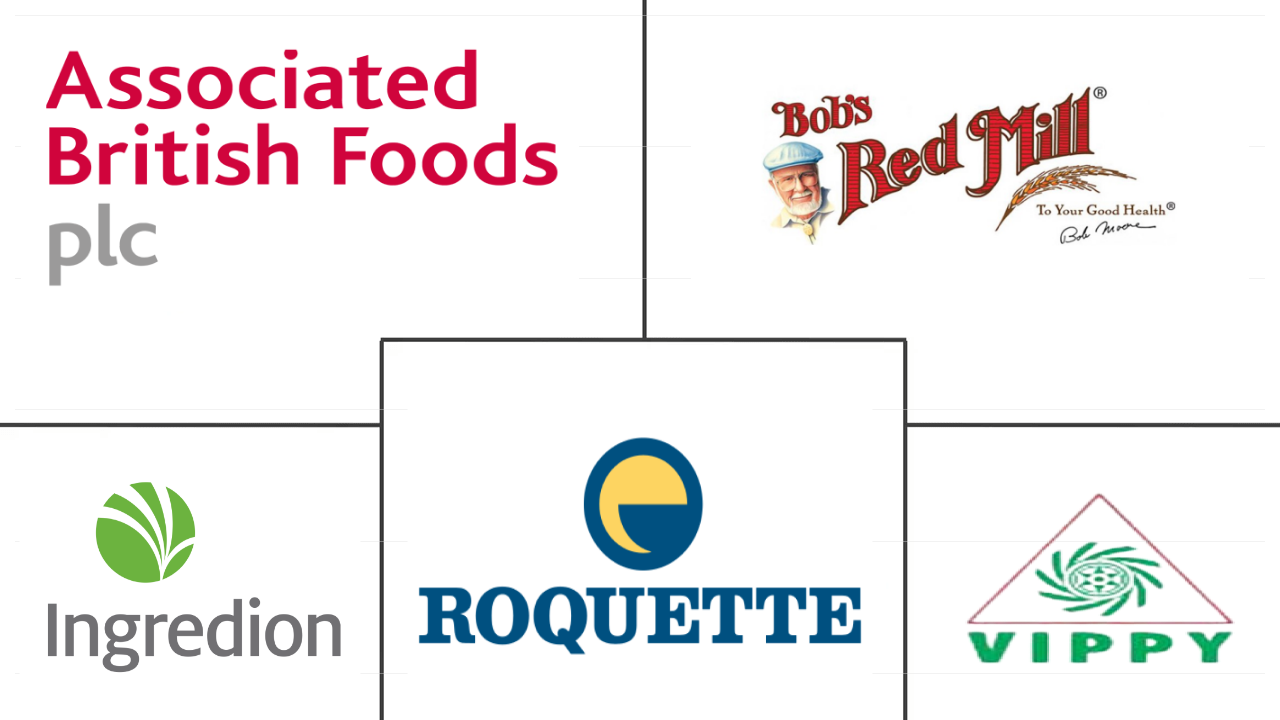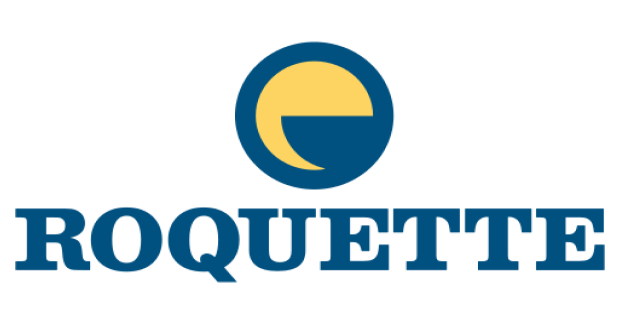Market Size of textured vegetable protein Industry
|
|
Study Period | 2017 - 2029 |
|
|
Market Size (2024) | USD 5.56 Billion |
|
|
Market Size (2029) | USD 9.20 Billion |
|
|
Largest Share by Distribution Channel | On-Trade |
|
|
CAGR (2024 - 2029) | 10.60 % |
|
|
Largest Share by Region | Europe |
Major Players |
||

|
||
|
*Disclaimer: Major Players sorted in no particular order |
Textured Vegetable Protein Market Analysis
The Textured Vegetable Protein Market size is estimated at 5.56 billion USD in 2024, and is expected to reach 9.20 billion USD by 2029, growing at a CAGR of 10.60% during the forecast period (2024-2029).
5.56 Billion
Market Size in 2024 (USD)
9.20 Billion
Market Size in 2029 (USD)
6.97 %
CAGR (2017-2023)
10.60 %
CAGR (2024-2029)
Largest Segment by Region
32 %
value share, Europe, 2023
The demand for meat substitutes has soared as vegan foods market share increased and the vegan or flexitarian population in the region rose significantly in recent years.
Largest Segment by Distribution Channel
66.31 %
value share, On-Trade, 2023
The channel accounts for over two-thirds of the value of TVP consumption, with more restaurants and hotels turning to TVP-based animal substitutes to satisfy vegan diets.
Fastest-growing Segment by Region
11.84 %
Projected CAGR, Asia-Pacific, 2024-2029
Many international food companies along with regional players are developing innovative meat substitutes derived from pulses, wheat, potato, and other plant-based ingredients.
Fastest-growing Segment by Distribution Channel
11.10 %
Projected CAGR, On-Trade, 2024-2029
The growth of the online food delivery sector, where several smartphone applications are steadily growing their addressable market, will aid in the segment's development.
Leading Market Player
1.63 %
market share, Roquette Freres, 2022

The company offers high-quality quality environmentally friendly and clean labeled textured plant proteins which help to easily formulate nutritious plant-based foods.
The veganism trend is driving the penetration of textured plant protein on the menu
- The on-trade channel is the largest distribution segment for the global sales of textured vegetable protein. Nearly 65% of the total value of TVP consumption is met through this channel, and it is expected to become more prominent and register a CAGR of 10.8% by value during the forecast period. In 2021, there were around 79 million vegans around the world. While the trend of veganism is growing, it still covers only 1% of the global population. The number of vegans is estimated to reach a much higher level. This trend will support the TVP market as more restaurants and hotels look forward to offering TVP-based meat substitutes to cater to vegan diets.
- The off-trade channel registered a growth of 28.35% by value during 2017-2022, which was majorly attributable to the development of the supermarkets/hypermarkets channel. The fastest-growing channel for the sales of textured vegetable protein worldwide is the online channel, which is projected to register a CAGR of 15.83% by value during the forecast period. Online retailers are more popular among consumers because they offer various TVP-based products in raw, frozen, and processed forms.
- The growth of the ready-to-cook (RTC) and ready-to-eat (RTE) categories is a major driving force for the online TVP channel, as consumers demand such products due to their busy lifestyles. Only 9.10% by value of the total TVP sold was through the online channel in 2022. This situation is expected to change as the online channel is projected to garner nearly 13.79% of the total market share by 2029. The online channel is a much easier trade channel for companies as it is less capital-intensive, and launching a product is much simpler than in the offline retail segment.
Increased vegan and vegetarian populations propelling the market growth
- Europe was the leading market for TVP in the world in 2022. With the growing market penetration of vegan food and the increasing number of vegans and flexitarians among the European population, the market for meat alternatives boomed in the region. There are approximately 2.6 million vegans in Germany as of 2022, and around 3.2% of the German population is vegan. Also, the number of vegans doubled from 2017 to 2022. German flexitarians prefer to consume TVP in the forms of patties/burgers, sausages, and ground meat because these products replicate the taste and texture of animal meat. The flexitarian population is limiting meat consumption due to concerns over animal welfare.
- The Middle East is anticipated to be the fastest-growing region in terms of consuming textured vegetable protein. It is projected to register a CAGR of 11.45% in terms of value during the forecast period. As a huge part of the global population is going to Arabic countries for tourism purposes, there is an increase in the demand for meat alternatives in countries like Saudi Arabia and the United Arab Emirates. There has been a growing perception of healthy vegetarian food options among people in the Middle East.
- North America holds the second-highest share of the global textured vegetable protein market. The United States is one of the key markets for textured vegetable protein. The higher demand for meat alternatives is backed by an ever-increasing number of Americans adopting veganism or turning to flexitarian diets. In order to meet the demand for soybeans in the country, around 4.44 billion bushels of soybeans were produced in the United States in 2022, planted in an area of 87.2 million acres (35.3 million hectares).
Textured Vegetable Protein Industry Segmentation
Off-Trade, On-Trade are covered as segments by Distribution Channel. Africa, Asia-Pacific, Europe, Middle East, North America, South America are covered as segments by Region.
- The on-trade channel is the largest distribution segment for the global sales of textured vegetable protein. Nearly 65% of the total value of TVP consumption is met through this channel, and it is expected to become more prominent and register a CAGR of 10.8% by value during the forecast period. In 2021, there were around 79 million vegans around the world. While the trend of veganism is growing, it still covers only 1% of the global population. The number of vegans is estimated to reach a much higher level. This trend will support the TVP market as more restaurants and hotels look forward to offering TVP-based meat substitutes to cater to vegan diets.
- The off-trade channel registered a growth of 28.35% by value during 2017-2022, which was majorly attributable to the development of the supermarkets/hypermarkets channel. The fastest-growing channel for the sales of textured vegetable protein worldwide is the online channel, which is projected to register a CAGR of 15.83% by value during the forecast period. Online retailers are more popular among consumers because they offer various TVP-based products in raw, frozen, and processed forms.
- The growth of the ready-to-cook (RTC) and ready-to-eat (RTE) categories is a major driving force for the online TVP channel, as consumers demand such products due to their busy lifestyles. Only 9.10% by value of the total TVP sold was through the online channel in 2022. This situation is expected to change as the online channel is projected to garner nearly 13.79% of the total market share by 2029. The online channel is a much easier trade channel for companies as it is less capital-intensive, and launching a product is much simpler than in the offline retail segment.
| Distribution Channel | ||||||
| ||||||
| On-Trade |
| Region | |||||||||||||
| |||||||||||||
| |||||||||||||
| |||||||||||||
| |||||||||||||
| |||||||||||||
|
Textured Vegetable Protein Market Size Summary
The textured vegetable protein (TVP) market is experiencing significant growth, driven by increasing consumer demand for plant-based meat alternatives. This market is characterized by a diverse range of distribution channels, with the on-trade segment being the largest, followed by off-trade and online channels. The online channel, in particular, is witnessing rapid expansion due to the growing popularity of ready-to-cook and ready-to-eat products, catering to consumers' busy lifestyles. The market is further bolstered by the rising trend of veganism and flexitarian diets, particularly in regions like Europe and North America, where there is a growing preference for TVP products that mimic the taste and texture of animal meat. The Middle East is also emerging as a fast-growing region for TVP consumption, driven by increasing awareness of healthy vegetarian options.
The market landscape is competitive and fragmented, with major players like Associated British Foods PLC, Bob’s Red Mill Natural Foods, Ingredion Inc., Roquette Freres, and Vippy Industries Ltd. leading the industry. These companies are actively engaging in strategic partnerships and innovations to enhance their product offerings and expand their market presence. Despite the challenges posed by price fluctuations in raw materials such as soybeans, wheat, and peas, the demand for TVP continues to rise, supported by its commoditized nature and the increasing adoption of plant-based diets. The market's growth is also influenced by external factors such as geopolitical events affecting grain prices, which have a direct impact on the cost of TVP. As the market evolves, companies are focusing on product differentiation through taste and local flavors to capture a larger share of the growing consumer base.
Textured Vegetable Protein Market Size - Table of Contents
-
1. MARKET SEGMENTATION (includes market size in Value in USD, Forecasts up to 2029 and analysis of growth prospects)
-
1.1 Distribution Channel
-
1.1.1 Off-Trade
-
1.1.1.1 Convenience Stores
-
1.1.1.2 Online Channel
-
1.1.1.3 Supermarkets and Hypermarkets
-
1.1.1.4 Others
-
-
1.1.2 On-Trade
-
-
1.2 Region
-
1.2.1 Africa
-
1.2.1.1 By Distribution Channel
-
1.2.1.2 By Country
-
1.2.1.2.1 Egypt
-
1.2.1.2.2 Nigeria
-
1.2.1.2.3 South Africa
-
1.2.1.2.4 Rest of Africa
-
-
-
1.2.2 Asia-Pacific
-
1.2.2.1 By Distribution Channel
-
1.2.2.2 By Country
-
1.2.2.2.1 Australia
-
1.2.2.2.2 China
-
1.2.2.2.3 India
-
1.2.2.2.4 Indonesia
-
1.2.2.2.5 Japan
-
1.2.2.2.6 Malaysia
-
1.2.2.2.7 South Korea
-
1.2.2.2.8 Rest of Asia-Pacific
-
-
-
1.2.3 Europe
-
1.2.3.1 By Distribution Channel
-
1.2.3.2 By Country
-
1.2.3.2.1 France
-
1.2.3.2.2 Germany
-
1.2.3.2.3 Italy
-
1.2.3.2.4 Netherlands
-
1.2.3.2.5 Russia
-
1.2.3.2.6 Spain
-
1.2.3.2.7 United Kingdom
-
1.2.3.2.8 Rest of Europe
-
-
-
1.2.4 Middle East
-
1.2.4.1 By Distribution Channel
-
1.2.4.2 By Country
-
1.2.4.2.1 Bahrain
-
1.2.4.2.2 Kuwait
-
1.2.4.2.3 Oman
-
1.2.4.2.4 Qatar
-
1.2.4.2.5 Saudi Arabia
-
1.2.4.2.6 United Arab Emirates
-
1.2.4.2.7 Rest of Middle East
-
-
-
1.2.5 North America
-
1.2.5.1 By Distribution Channel
-
1.2.5.2 By Country
-
1.2.5.2.1 Canada
-
1.2.5.2.2 Mexico
-
1.2.5.2.3 United States
-
1.2.5.2.4 Rest of North America
-
-
-
1.2.6 South America
-
1.2.6.1 By Distribution Channel
-
1.2.6.2 By Country
-
1.2.6.2.1 Argentina
-
1.2.6.2.2 Brazil
-
1.2.6.2.3 Rest of South America
-
-
-
-
Textured Vegetable Protein Market Size FAQs
How big is the Global Textured Vegetable Protein Market?
The Global Textured Vegetable Protein Market size is expected to reach USD 5.56 billion in 2024 and grow at a CAGR of 10.60% to reach USD 9.20 billion by 2029.
What is the current Global Textured Vegetable Protein Market size?
In 2024, the Global Textured Vegetable Protein Market size is expected to reach USD 5.56 billion.

